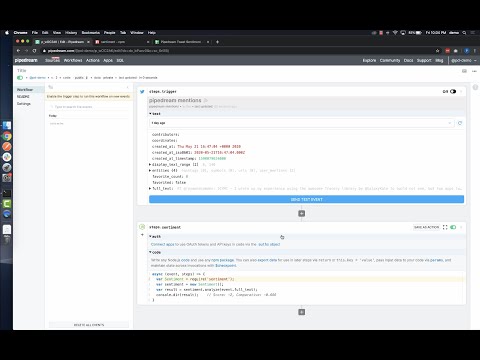What do you want to automate
with Google Sheets and Browserless?
Prompt, edit and deploy AI agents that connect to Google Sheets, Browserless and 3,000+ other apps in seconds.
Trusted by 1,000,000+ developers from startups to Fortune 500 companies
Popular Ways to Connect Google Sheets with Browserless#
Popular Google Sheets and Browserless Triggers#
Emit new event each time a comment is added to a spreadsheet.
Emit new event each time a row or rows are added to the bottom of a spreadsheet.
Emit new event each time a row or rows are added to the bottom of a spreadsheet.
Emit new event each time a row or cell is updated in a spreadsheet.
Popular Google Sheets and Browserless Actions#
Add a single row of data to Google Sheets. Optionally insert the row at a specific index (e.g., row 2 to insert after headers, shifting existing data down). See the documentation
Add multiple rows of data to a Google Sheet. See the documentation
Get all values or values from a range of cells using A1 notation. See the documentation
Overview of Google Sheets#
The Google Sheets API allows for the creation, reading, updating, and deletion of data within Google Sheets, enabling a robust platform for spreadsheet management and data manipulation. Through Pipedream, you can craft serverless workflows that respond to various triggers, such as webhook events, emails, or scheduled times, to interact with Google Sheets. This synergy can automate reporting, synchronize data across applications, manage inventory, track leads in a CRM, or even conduct survey analysis by updating and retrieving sheet data on the fly.
Connect Google Sheets#
import { axios } from "@pipedream/platform"
export default defineComponent({
props: {
google_sheets: {
type: "app",
app: "google_sheets",
}
},
async run({steps, $}) {
return await axios($, {
url: `https://www.googleapis.com/oauth2/v1/userinfo`,
headers: {
Authorization: `Bearer ${this.google_sheets.$auth.oauth_access_token}`,
},
})
},
})
Overview of Browserless#
The Browserless API on Pipedream allows you to automate browser actions without the overhead of managing your own browser infrastructure. This service provides a way to run Chrome browser sessions programmatically, making it ideal for web scraping, automated testing, and screenshot capture. Leveraging this on Pipedream, you can create serverless workflows that interact with web pages, extract data, and perform actions as a human would, all in a scalable and efficient manner.
Connect Browserless#
import puppeteer from 'puppeteer-core@14.1.0';
export default defineComponent({
props: {
browserless: {
type: "app",
app: "browserless",
}
},
async run({steps, $}) {
// See the browserless docs for more info:
// https://www.browserless.io/docs/
const browser = await puppeteer.connect({
browserWSEndpoint: `wss://chrome.browserless.io?token=${this.browserless.$auth.api_key}`
})
const page = await browser.newPage()
const url = "https://example.com"
const type = "png"
await page.goto(url)
const screenshot = await page.screenshot()
// export the base64-encoded screenshot for use in future steps,
// along with the image type and filename
$.export("screenshot", Buffer.from(screenshot, 'binary').toString('base64'))
$.export("type", type)
$.export("filename",`${url.replace(/[&\/\\#, +()$~%.'":*?<>{}]/g, '_')}-${+new Date()}.${type}`)
await browser.close()
},
})Related Videos#



Community Posts#


